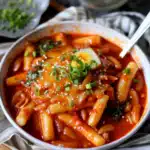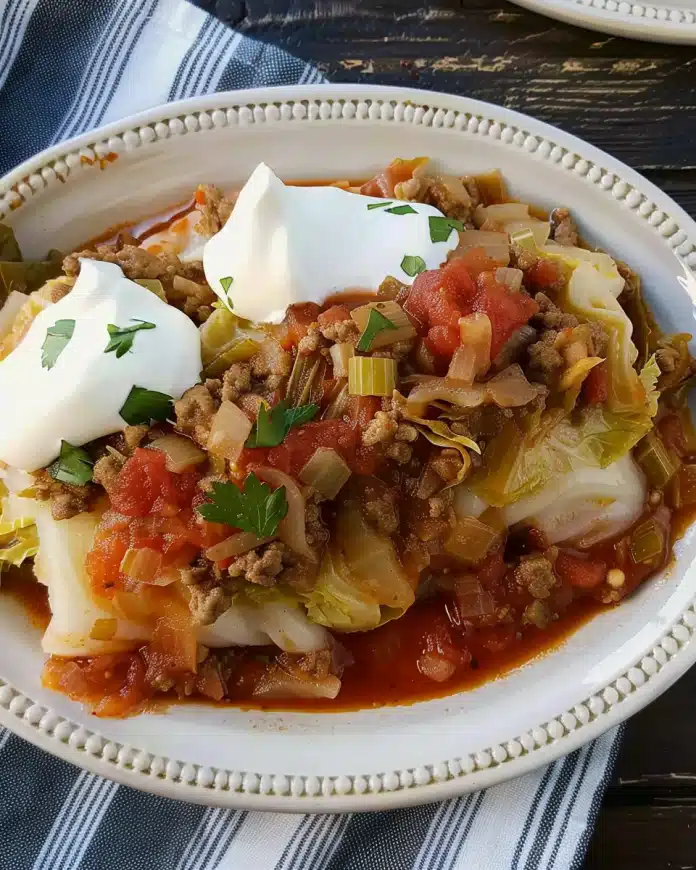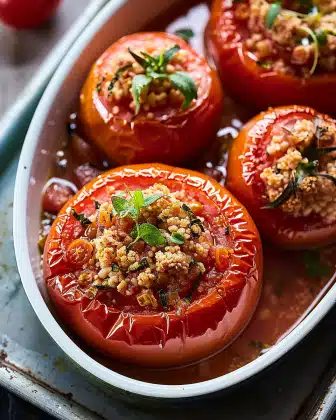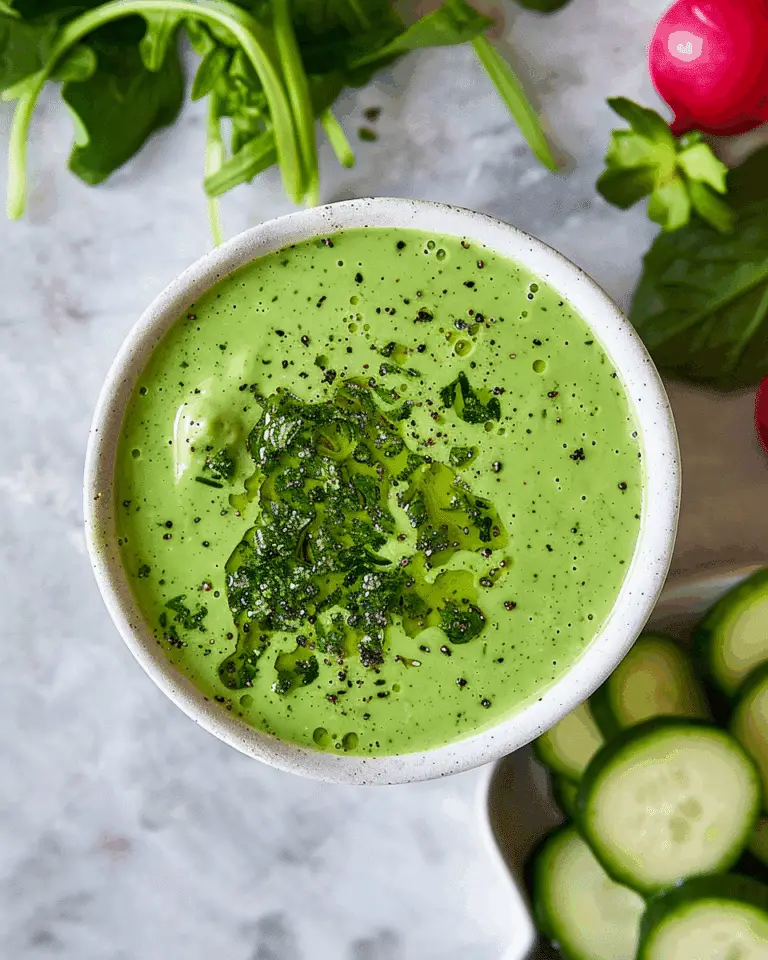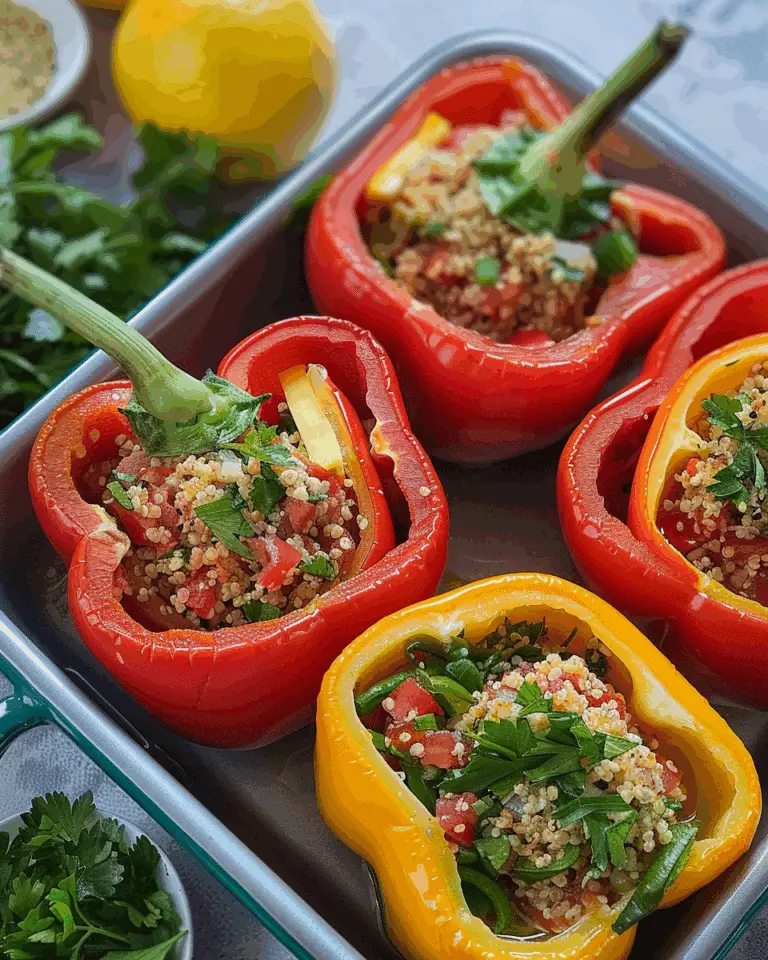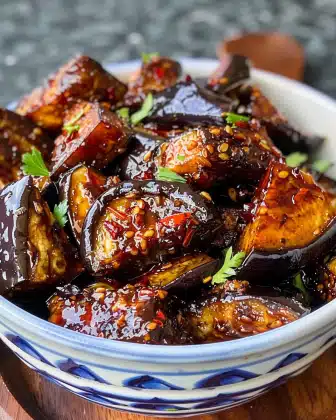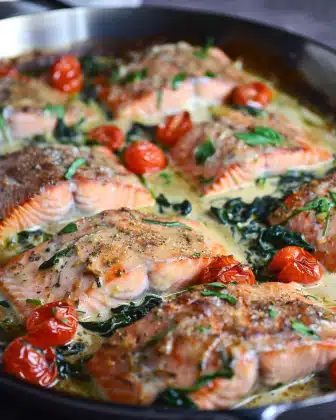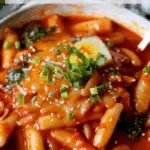Tteokbokki, also known as dukbokki, is a beloved Korean street food made from chewy rice cakes simmered in a fiery, sweet, and savory sauce. This dish is deeply comforting, incredibly flavorful, and satisfying thanks to its bold ingredients like gochujang (Korean red chili paste) and gochugaru (Korean chili flakes). Often served with fish cakes and garnished with scallions and sesame seeds, it’s a perfect balance of texture and heat in every bite.
Why You’ll Love This Recipe
-
Chewy, addictive texture: Korean rice cakes have a dense, springy consistency that’s deeply satisfying.
-
Explosive flavor: The sauce is rich, spicy, savory, and slightly sweet – everything you want in a comforting dish.
-
Simple but customizable: Stick with the traditional version or mix it up with ramen, cheese, or boiled eggs.
-
Quick to make: Ready in just 35 minutes, it’s perfect for a fast, flavor-packed meal.
-
Restaurant-quality at home: This version rivals what you’d get from a Seoul street food stall.
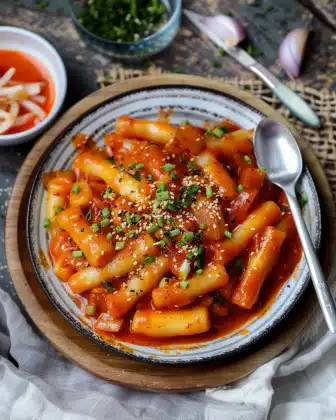
Ingredients
(Tip: You’ll find the full list of ingredients and measurements in the recipe card below.)
-
Tteokbokki (Korean rice cakes)
-
Anchovy stock (or water)
-
Dried kelp
-
Gochujang (Korean red chili paste)
-
Gochugaru (Korean chili pepper flakes)
-
Soy sauce
-
Sugar
-
Korean fish cakes
-
Toasted sesame oil
-
Scallions
-
Sesame seeds (optional)
Directions
-
Make the broth: In a medium pot over high heat, combine anchovy stock and dried kelp. Bring to a boil. Once boiling, remove the kelp, reduce the heat, and simmer uncovered for 10 minutes.
-
Season the broth: Stir in gochujang, gochugaru, soy sauce, and sugar. Bring back to a boil.
-
Cook the rice cakes: Add the tteokbokki and simmer for 8–10 minutes, stirring often to prevent sticking.
-
Add fish cakes: Toss in the sliced fish cakes and cook for another 4 minutes, stirring occasionally.
-
Finish and serve: Turn off the heat. Add sesame oil and chopped scallions. Stir and transfer to bowls. Garnish with sesame seeds and serve hot.
Servings and timing
Servings: 4
Prep Time: 10 minutes
Cook Time: 25 minutes
Total Time: 35 minutes
Variations
-
Rabokki: Add a block of instant ramen noodles during the last 4–5 minutes of cooking for a filling twist.
-
Rose Tteokbokki: Stir in heavy cream and shredded cheese for a creamier, milder take on the dish.
-
Egg-topped: Hard-boiled eggs are a common addition and pair wonderfully with the spicy sauce.
-
Vegetable Boost: Include cabbage, shredded carrots, or daikon for added crunch and nutrients.
-
Cheese Tteokbokki: Add mozzarella cheese just before serving for a stretchy, gooey finish.
Storage/Reheating
-
Storage: Store leftovers in an airtight container in the refrigerator for up to 2–3 days.
-
Reheating: Microwave until hot, or reheat gently in a pan with a splash of water to loosen the sauce.
-
Freezing: Not recommended. The texture of both the rice cakes and fish cakes becomes unpleasant once thawed a second time.
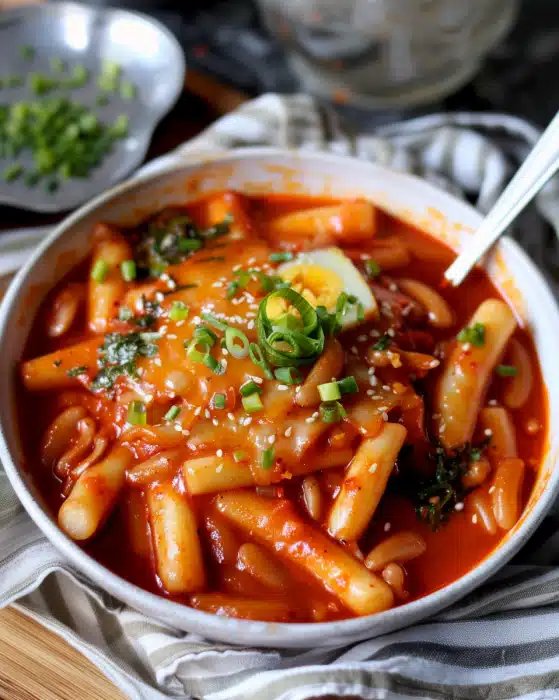
FAQs
What is tteokbokki made of?
Tteokbokki is primarily made from cylindrical Korean rice cakes simmered in a sauce made with gochujang, gochugaru, soy sauce, and sugar. It often includes fish cakes and scallions.
Is tteokbokki very spicy?
Yes, traditionally it has a significant kick from gochujang and gochugaru, but you can adjust the spice level by reducing the chili flakes or paste.
Can I make tteokbokki without fish cakes?
Absolutely. While fish cakes are traditional, you can leave them out or replace them with tofu, tempeh, or vegetables.
Where can I buy Korean rice cakes?
They are typically found in the refrigerated or frozen section of Asian grocery stores, particularly Korean markets.
How do I soften hard rice cakes?
If your rice cakes are firm or frozen, soak them in warm water for 10–15 minutes before cooking.
Can I use water instead of anchovy stock?
Yes, you can substitute water, though the flavor won’t be as rich. Consider adding a piece of kombu or a few dried shiitake mushrooms for more umami.
What’s the best type of fish cake to use?
Thin, flat Korean fish cakes are best for this recipe. They’re savory, slightly sweet, and have a pleasant chewiness.
Can I prepare this dish ahead of time?
Tteokbokki is best eaten fresh, as the rice cakes harden in the fridge. If you must prepare it ahead, reheat gently with some added water.
Is tteokbokki gluten-free?
Traditional gochujang and soy sauce contain wheat, so check labels or use gluten-free alternatives to make a gluten-free version.
What should I serve with tteokbokki?
Light Korean side dishes (banchan) like cucumber salad, bean sprout salad, or miso soup complement tteokbokki well.
Conclusion
Tteokbokki is a fiery, comforting Korean classic that’s easy to make and endlessly satisfying. Whether you’re craving a spicy snack or a full meal, this dish delivers bold flavor and an unbeatable texture every time. Customize it with your favorite add-ins, serve it piping hot, and enjoy a taste of Korean street food in your own kitchen.
PrintTteokbokki (Dukbokki)
5 Stars 4 Stars 3 Stars 2 Stars 1 Star
No reviews
Tteokbokki is a classic Korean street food made with chewy rice cakes simmered in a spicy-sweet sauce of gochujang, gochugaru, soy sauce, and sugar. Often paired with fish cakes and scallions, it’s bold, comforting, and full of addictive flavor.
- Author: Tina
- Prep Time: 10 minutes
- Cook Time: 25 minutes
- Total Time: 35 minutes
- Yield: 4 servings
- Category: Main Dish
- Method: Simmering
- Cuisine: Korean
- Diet: Halal
Ingredients
1 lb tteokbokki (Korean rice cakes)
4 cups anchovy stock (or water)
1 piece dried kelp
3 tablespoons gochujang (Korean red chili paste)
1–2 tablespoons gochugaru (Korean chili flakes, to taste)
2 tablespoons soy sauce
1 tablespoon sugar
1 cup Korean fish cakes, sliced
1 teaspoon toasted sesame oil
2 scallions, chopped
1 tablespoon sesame seeds (optional, for garnish)
Instructions
- In a medium pot, combine anchovy stock and dried kelp. Bring to a boil. Once boiling, remove kelp and simmer uncovered for 10 minutes.
- Stir in gochujang, gochugaru, soy sauce, and sugar. Bring back to a boil.
- Add rice cakes and simmer 8–10 minutes, stirring often to prevent sticking.
- Add sliced fish cakes and cook 4 more minutes, stirring occasionally.
- Turn off heat. Stir in sesame oil and chopped scallions. Transfer to bowls and garnish with sesame seeds. Serve hot.
Notes
- Soak rice cakes in warm water for 10–15 minutes if firm or frozen.
- Adjust spice level by reducing gochugaru or gochujang.
- Use water instead of stock if needed, adding kombu or mushrooms for umami.
- Eat fresh—rice cakes harden in the fridge but can be reheated with water.
Nutrition
- Serving Size: 1 portion
- Calories: 370
- Sugar: 10g
- Sodium: 880mg
- Fat: 8g
- Saturated Fat: 1.5g
- Unsaturated Fat: 5.5g
- Trans Fat: 0g
- Carbohydrates: 65g
- Fiber: 3g
- Protein: 9g
- Cholesterol: 15mg

